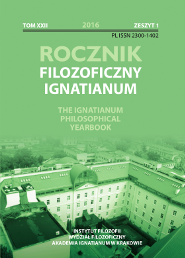Quality-of-life criteria for children and adolescents
Abstract
This article presents the criteria and measurement tools employed when assessing quality of life for children and adolescents. The notion of ‘quality of life’ is dynamic, in that quality of life changes as a function of age, stage of development, level of reflection, the undertaking of new tasks, and the adoption of new roles. How we assess the subjective quality of life of children and adolescents depends on the level of development and quality-of-life criteria specific to a given period. For younger children, the fulfilment of basic needs - i.e. emotional needs, such as the need to feel safe or valued by others - is especially relevant. For older children, family and health are important, but so are peer-acceptance and school achievements. For adolescents, personal considerations such as the sense of self, autonomy, interpersonal relationships, having friends, possibilities of development and prospects for the future, are all important. It is possible to measure quality of life even in small children, but doing so requires that we pay attention to the specifics of their development, the scope of their personal experiences, and their ability to express their assessments. Hence an approach that makes use of an attractive format is to be preferred (i.e. pictures). Knowledge of the specific quality-of-life criteria involved enables researchers to construct adequate tools, and to use their results to help bring about improvements in quality of life and the promotion of healthy living.References
Bańka A (2005), "Jakość życia a jakość rozwoju: Społeczny kontekst płci, aktywności i rodziny", In Psychologia jakości życia. , pp. 11-79. Stowarzyszenie Psychologia i Architektura.
Bowling A (1995), "The Most Important Things in Life. Comparisons Between Older and Younger Population Age Groups by Gender: Results from a National Survey of the Public's Judgement" (6(4)), pp. 169-175.
Bowling A, Banister D, Sutton S, Evans O and Windsor J (2002), "A Multidimensional Model of the Quality of Life in Older Age" (6(4)), pp. 355-371.
Havighurst RJ (1953), "Developmental Task and Education" David McKay.
Lindström B (1994), "Quality of Life for Children and Disabled Children Based on Health as a Resource Concept" (48), pp. 529-530.
Lindström B (1992), "Quality of Life: A Model for Evaluating Health for All: Conceptual Considerations and Policy Implications" (37), pp. 301-306.
Lindström B and Eriksson B (1993), "Quality of Life among Children in the Nordic Countries" (2(1)), pp. 23-32.
Lindström B and Köhler L (1991), "Youth, Disability and Quality of Life" (18(2)), pp. 121-128.
Manificat S and Dazord A (1998), "Children’s Quality of Life Assessment: Preliminary Results Obtained with the AUQUEI Questionnaire" (19), pp. 2-3.
Mazur J and Mierzejewska E (2003), "Jakość życia związana ze zdrowiem dzieci i młodzieży -- koncepcje, metody badawcze i wybrane zastosowania" (7), pp. 35-48.
Oleś M (2010), "Jakość życia młodzieży w zdrowiu i w chorobie" Wydawnictwo KUL.
Oleś M (2006), "Poczucie jakości życia u małych dzieci - czy i jak można je oceniać? Wstępne wyniki badania dzieci przedszkolnych" (12(1)), pp. 101-114.
Oleś M (2005), "Jak oceniać jakość życia u dzieci?" (4(1)), pp. 69-88.
Raphael D, Rukholm E, Brown I, Hill-Bailey RN and Donato E (1996), "The Quality of Life Profile -- Adolescent Version: Background, Description, and Initial Validation" (19(5)), pp. 366-375.
Renwick R and Brown I (1996), "The Centre for Health Practitioners: Conceptual Approach to Quality of Life -- Being, Belonging and Becoming", In Quality of Life in Health Promotion and Rehabilitation: Conceptual Approaches, Issues and Applications. , pp. 75- 86. Sage Publications.
The KIDSCREEN Group Europe (2006), "The KIDSCREEN Questionnaires: Quality of Life Questionnaires for Children and Adolescents: Handbook" Pabst Science Publishers.
The WHOQOL Group (1995), "The World Health Organization Quality of Life Assessment (WHOQOL): Position Paper from the World Health Organization" (41), pp. 1403-1409.
Varni JW, Seid M and Rhode CA (1999), "The PedsQLTM: Measurement Model for the Pediatric Quality of Life Inventory" (37), pp. 126-139.
World Health Organization (WHO) (1948), "Constitution of the World Health Organization Basic Document" World Health Organization.
World Health Organization (WHO), Regional Office for Europe (1985), "Targets for Health for All: Targets in Support of the European Regional Strategy for Health for All, (European Health for All Series No. 1)" World Health Organization.
Zgromadzenie Ogólne Organizacji Narodów Zjednoczonych (ONZ) (), "Konwencja o prawach dziecka przyjęta przez Zgromadzenie Ogólne Narodów Zjednoczonych dnia 20 listopada 1989 r.," Dz. U. Nr 120, poz. 526 z 23 grudnia 1991 r..
The Yearbook only accepts materials for publication that are free of all conflicts of interest, and that in no way involve conflicts over authorship, copyright, etc. The Editors will take action against any cases of plagiarizing, ghostwriting1, guest/honorary authorship2, etc. Where co-authored work is concerned, the Author listed first is expected to take responsibility for the submission, and is required to make clear the contributions of all of the Co-Authors involved. In the event of the publication owing its existence to funding dedicated to this purpose, this fact should be made clear: e.g. in any note of thanks/acknowledgement, or in a footnote, etc. Explicit notification should be given of any form of reprinting, with the appropriate evidence of permission to publish being furnished as required. Any impropriety on the part of Authors/Reviewers risks exposing them to appropriate responses from the relevant institutions.
______
1 This term refers to instances of a person who has made an essential contribution being omitted from the list of authors, or from notes conveying gratitude and/or acknowledgement.
2 This occurs when a person who has made either an insignificant contribution or no contribution at all nevertheless appears on the list of authors.





